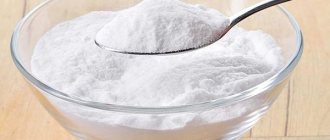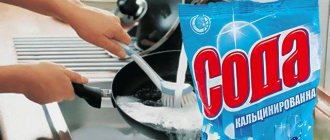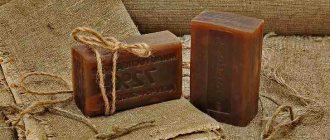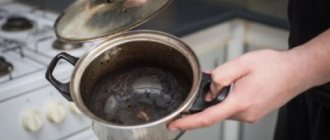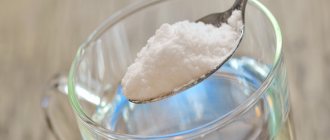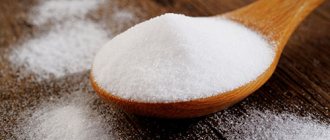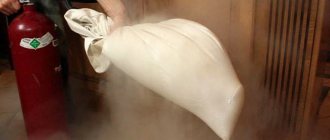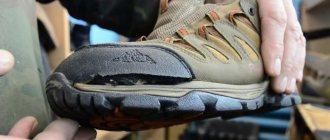What is soda ash
To obtain soda ash, carbonated salt is calcined at high temperatures, that is, calcined. It looks the same as food, but has different properties.
Soda ash is a strong alkali, so it is used in everyday life: the product effectively copes with dirt and removes stains. Thanks to its chemical composition, it is stronger and more economical than its food counterpart. You can buy the product in household goods stores at a price of 25 rubles per kilogram.
Composition and properties
Soda ash, or sodium carbonate, is a chemical combination of sodium, carbon and oxygen molecules. It dissolves completely in water, forming a concentrated alkaline solution.
Its main property: the ability to clean surfaces, remove difficult-to-remove contaminants, and destroy pathogens.
Instructions for use will be different in each case, depending on what needs to be done: disinfection, cleaning the plumbing, or removing blockages in the toilet.
The shelf life of the substance is six months from the date of manufacture.
Soda ash in the kitchen
Baking soda is suitable for cleaning kitchen appliances, dishes and furniture. Caution: This is a mild abrasive, so be careful not to rub too hard or you may scratch the surfaces.
Washing dishes
Soda can be used to clean old grease and stains from tea and coffee mugs. There are four ways to use soda:
- Pour baking soda onto a sponge or directly onto the dirty area and rub gently.
- Mix baking soda with a little water. The result is a cleaning paste - this is a more delicate cleaning agent than regular powder.
- Mix baking soda with a small amount of hydrogen peroxide or citric acid. The result is a solution that bleaches contaminated areas well and eliminates unpleasant odors.
- Add a handful of baking soda to your dishwashing liquid: this will enhance the cleaning effect of the product.
Cleaning pots and pans from carbon deposits
A paste of salt, hydrogen peroxide and soda can easily remove burnt fat. Distribute the product over the contaminated areas and set the dishes aside for an hour. After treatment, the remaining fat can be easily washed off with the hard side of the sponge.
Not all dishes can be washed with soda: it is an abrasive that can ruin the fragile Teflon coating or aluminum. If you're concerned about baking soda leaving scratches, explore other cleaning methods.
Descaling
Take a clean, damp sponge and some baking soda. Rub the product onto the inside of the kettle, add water and boil. Then pour out the liquid and rinse the container with running water. This method is only suitable for cleaning metal kettles: it is better to clean plastic and glass surfaces without abrasives.
Cleaning household appliances
To clean the stove and oven from dirt and remove unpleasant odors, follow the instructions:
- Prepare soda paste.
- Apply it evenly to the dirty surface and leave for 12 hours.
- Mix vinegar with water and spray through a spray bottle over the baking soda paste. Leave for 15 minutes.
- Remove the composition with a damp cloth.
You can also use baking soda to clean your refrigerator and hood:
- Add 1 tablespoon of product to 1 liter of water.
- Pour the liquid into a spray bottle.
- Spray onto contaminated surfaces and leave for 10 minutes.
- Use a damp cloth to remove the solution.
To clean old grease from your microwave, prepare a solution, place it in the oven and turn on the heating mode for 5-10 minutes. The composition will soften the dirt and make it easier to clean.
Fighting unpleasant odor
Baking soda perfectly absorbs third-party odors, so it is advisable to use it as a safe means to combat unpleasant odors in your home:
- Many housewives place bowls of this fine white powder in the refrigerator to eliminate unpleasant odors in it. This application is also relevant in a bedside table with a trash can and in an area where pets eat or live.
- To keep your refrigerator or microwave oven clean and fresh, you can wash the surfaces with a solution of 2 tbsp. spoons of baking soda and 1 liter of warm water. After using this homemade product, rinse surfaces with clean water and wipe dry.
- You can flavor the air in your home using special soda sachets. Add an essential oil to the powder that smells particularly pleasant to you. Mix everything well so that there are no lumps. 3-4 tsp. Place this mixture in a paper coffee filter and tie the bag with twine. Hang this bag in a place that you would like to refresh. You can place it in a closet, in a specific room, or even inside a vacuum cleaner. In the latter case, the aroma will spread throughout the house during the cleaning process.
Using soda ash in the bathroom
Baking soda removes plaque and clears blockages. The product is especially effective for cleaning tiles and plumbing: it will help polish surfaces to a shine.
For plumbing
These methods will help in the fight against rust, salts, lime and soap deposits. Mix baking soda and soap shavings with water to form a thick paste. Distribute the product evenly over dirty surfaces for an hour and rinse thoroughly.
To give your plumbing fixtures a shine, take table vinegar and spray it on your faucets. Sprinkle the areas with baking soda, and after 15 minutes, rub thoroughly with a sponge and rinse.
If the bathtub is very dirty and has not been washed for a long time, then this recipe will do:
- Take table vinegar, bleach, baking soda and soda ash.
- Mix both types of soda in equal proportions and add a little water to make a thick paste.
- Apply evenly to the most problematic areas and leave for 15 minutes.
- Prepare a solution of vinegar and bleach in equal proportions. Treat contaminants with the resulting liquid. After 30 minutes, rinse thoroughly with water.
This is a very aggressive method and is not suitable for cleaning acrylic bathtubs. For them it is better to use more gentle means.
For tiles
To restore the shine and cleanliness of the tiles, take 3 tablespoons per liter of water. soda Wash the tiles with the resulting solution, and then wipe it with a clean, damp cloth.
To clear blockages
To remove a blockage in the kitchen or bathroom, use one of the following methods:
- Pour 130 g of soda into the drain and carefully pour in 1 liter of boiling water. After 30 minutes, turn on running water to flush the drain.
- Pour 130 g of soda, 150 ml of vinegar and bleach alternately and pour into the drain and close it for 30 minutes. Then pour in 3 liters of hot water.
When cleaning the washing machine
Over time, an unpleasant odor appears inside the drum: if the parts are not dried well after washing, mold will form inside the equipment and pathogenic bacteria will begin to multiply.
Soda ash will clean the drum and help get rid of unwanted odors. Take a glass of water, 250 g of soda, 2 glasses of vinegar (9%). Combine baking soda and water. Pour the solution into the liquid compartment and the vinegar into the drum. Select any washing mode and run the machine for 3 hours. This method of processing will not harm the machine and will clean it of germs and scale.
Sodium carbonate for garden care
Soda solutions help defeat diseases of cultivated plants caused by high humidity. Experienced gardeners recommend using sodium carbonate in the fight against powdery mildew, viburnum leaf beetle and other common scourges.
Plant treatment
- Powdery mildew
- Dissolve two tablespoons of baking soda in a bucket of water.
- Add 40 grams of crushed laundry soap, stir until completely dissolved.
- On a windless day without heat or rain, spray the garden. Treatment can be carried out once a week. For prevention, it is useful to spray the solution once or twice in the spring during flowering.
- Perennial flowers
- Dissolve four tablespoons in a bucket of water.
- Spray the plants periodically during the flowering period.
To eliminate gray rot, water the flowers once every two weeks with a solution of a tablespoon of soda per 10 liters of water.
- Viburnum leaf beetle
- Grind a bar of green potassium soap.
- Dissolve soap shavings in a bucket of water.
- Add a tablespoon of sodium carbonate.
- Treat the back of the leaves once a week until the disease goes away.
- Rose bushes
You can rejuvenate roses with the following composition:
- Water - 5 liters.
- Soda ash - a teaspoon.
- Ammonia - half a teaspoon.
- Epsom salt - teaspoon.
Every 10 days, water or spray the roses with this solution. If the plant is young, exclude ammonia from the recipe.
If you are an avid summer resident, you probably know about the use of soda ash in the garden.
Getting rid of aphids
Gardeners have known for a long time that aphids can be killed with soda quickly and effectively. The method, with proven effectiveness, is also popular because it simultaneously increases productivity and protects plants from mold and many diseases. Soda solution can be used to treat flowers, fruit trees, berry bushes, garden and indoor plants.
Alkali in combination with soap creates unbearable conditions for pests, but they cannot escape - the viscous soap layer gets in the way.
- Rub laundry (300 g) or tar (100 g) soap.
- Dissolve the soap in warm water.
- Add a tablespoon of sodium carbonate for every two liters of water.
You can add a teaspoon of iodine to this composition to speed up the recovery of damaged plants. Chopped garlic in a soda solution will repel aphids from your area for a long time.
Do not overuse the soda-soap treatment, otherwise the leaves in your garden will turn yellow and fall off prematurely. The interval between treatments is at least a week. The last spraying is three weeks before harvest.
You might be interested in: Baking soda for the garden or vegetable garden - an indispensable lifesaver for a summer resident
Technical soda for weeds
Dealing with weeds in the garden can be easier than destroying unwanted vegetation that stubbornly makes its way between paving slabs, near the walls of the house and under the fence. In this case, you do not need to worry about the health of the plants - water the problem areas with soda ash concentrate. The effect will increase if you choose a hot and dry day for the fight.
You may be interested in: Treatment of vineyards with baking soda against diseases during ripening
Washing clothes
Baking soda works well to whiten and remove stubborn stains. This is a strong product, so it can only wash thick items made of cotton or linen. Such washing will ruin synthetics, wool and silk. It is not recommended to use soda for colored items: the aggressive composition can ruin the color of the fabric.
Wash.
Soda can be used as a regular washing powder: it is added to the basin when soaking or washing in a ratio of 1 tbsp. for 2–3 liters of water. When washing in a machine, add 3 tbsp. l. funds in the powder department. Choose a temperature above 40°C, otherwise the soda will not dissolve in the water.
Washing children's clothes.
Soda is hypoallergenic, completely dissolves in water during washing and has no odor, so solutions with low concentrations of the product are safe for washing children's clothes. Recipe: take up to 50 g of detergent for 5 liters of water, soak laundry in the solution for 1–2 hours, wash and rinse thoroughly by hand or in a washing machine
Removing stubborn stains
Add soda to the basin at the rate of 1 tbsp. powder per 2 liters of water and stir well. Rub the contaminated areas with laundry soap and soak the items in the solution overnight. In the morning, wash your clothes as usual or in a washing machine.
You can make an effective stain remover from soda ash:
- Take a spray bottle and pour 250 g of water, 40 g of vinegar into the bottle and mix well.
- Add 30 g of soda and shake.
- Spray the resulting mixture onto the stain to wet the fabric and leave for 15 minutes.
- Gently scrub the stain with a sponge or soft brush and wash as usual.
Fabric softening.
Towels and bed linens are washed more often than other items, so over time they become rough and tough. Soda ash will help restore softness:
- When washing in a washing machine, add 50 g of soda to the conditioner compartment and set the temperature to 40 to 100°C. Add an extra rinse to rinse any remaining product from the fibers.
- When washing by hand, soak the item in a bowl of baking soda for 15–20 minutes. Concentration of soda solution: 5 grams of powder per 5 liters of water.
Adviсe
In order not to completely ruin the appearance of the dishes, you should not clean aluminum frying pans, plastic and wood products with soda and glue.
It is strictly forbidden to boil forks and spoons made of cupronickel. The result of digestion is a darkened frage.
It’s easy to descale the kettle : just add 1 tbsp. baking soda, add water and boil it for thirty minutes. Afterwards, the water is drained and the walls of the kettle are wiped with a soft sponge. Details are in this article.
Where should you not use soda ash?
- You cannot wash capricious and colored materials with laundry soda: silk, wool, leather, suede, dermantine, membrane clothing.
- Do not use this product to clean natural interior materials and coatings that require special care: for example, copper, wood.
- Use soda ash with caution on painted objects and varnished surfaces: the substance will corrode the paint.
- Alkali has a bad effect on plastic and rubber products. Therefore, it is better not to wash PVC windows, acrylic bathtubs, shower doors or refrigerators with soda solutions.
- It is not recommended to expose brickwork or fiberglass tiles to strong alkalis.
Mopping floors
You can use soda ash to clean floors. Pre-prepare a sodium carbonate-based product and then add a small amount to the water for treating floors.
To prepare the product you will need 25–50 g of soda ash and the same amount of liquid soap. Dilute the ingredients in 3 liters of water and pour into a beautiful container. Add the substance to the water when treating floors. For severe stains, apply detergent directly to the stains, leave for 10-15 minutes and wipe with a cloth. After treating with sodium carbonate, be sure to wipe the surfaces with a clean, damp cloth.
Please note that if the floors are made of wood, parquet or laminate, the use of soda ash is not recommended. The same applies to coatings painted with enamel or varnish.
Precautionary measures
Soda ash can be harmful to health if precautions are not taken when using and storing it.
Rules:
- When working with soda, protect your hands with gloves, take care of your respiratory system and mucous membranes.
- Keep the product away from food and medicine.
- Store it in an airtight glass container away from children and pets in a dry, well-ventilated area.
If soda gets on your skin or mucous membranes, immediately wash them with water. The chemical may cause burns on sensitive skin.
How to prepare the solution
Soda ash can be used to wash dishes, clean pipes, and get rid of faded stains on clothes. This universal product relieves the housewife of the need to keep a whole arsenal of household chemicals at home for various needs.
Before use, it is necessary to make a solution of soda ash of the required concentration. Additional components are often added to it - soap, washing powder, ammonia. It is important to remember that too much product can cause damage to things and surfaces. The ratio of water and powder, depending on different purposes and household needs, is presented in the table.
Table - Amount of soda ash for domestic purposes
| Target | Proportions (soda - water) |
| Handwash | – 3 tablespoons per 10-12 l |
| Automatic wash | – 3-5 tablespoons (depending on water hardness); – 200 g per 5 kg of white laundry |
| Water softening (for example, for pouring into an iron) | – 2-3 tablespoons per 10 l |
| Cleaning the drum and cuff of the washing machine from dirt and mold | – 6 tablespoons per 200 ml |
| Mopping floors | – 3 tablespoons per 5 l |
| Washing dishes | – 3 tablespoons per liter |
| Toilet disinfection | – 2-3 tablespoons of soda and soap shavings per 200 ml (makes a paste) |
| Cleaning tiles | – 2-3 tablespoons per liter |
The same dose of powder can act differently depending on the temperature. The hotter the water, the more active the substance. The powder dissolves poorly in cold water, forming flakes. Therefore, it is optimal to use warm or cool water at room temperature for mixing.
Briefly about the main thing
- Soda ash is a universal and inexpensive cleaning product that has a cleaning effect.
- The effect of soda can be enhanced by other means: citric acid, vinegar, hydrogen peroxide.
- The product must be used with caution: baking soda is a strong alkali, which is not suitable for washing finicky fabrics or cleaning wooden and plastic surfaces.
- When working, take precautions and use skin and mucous protection products.
- Sometimes it's better not to experiment. Order maintenance cleaning: cleaners will carefully deal with complex stains and restore the appearance of any, even the most capricious coatings and materials.

